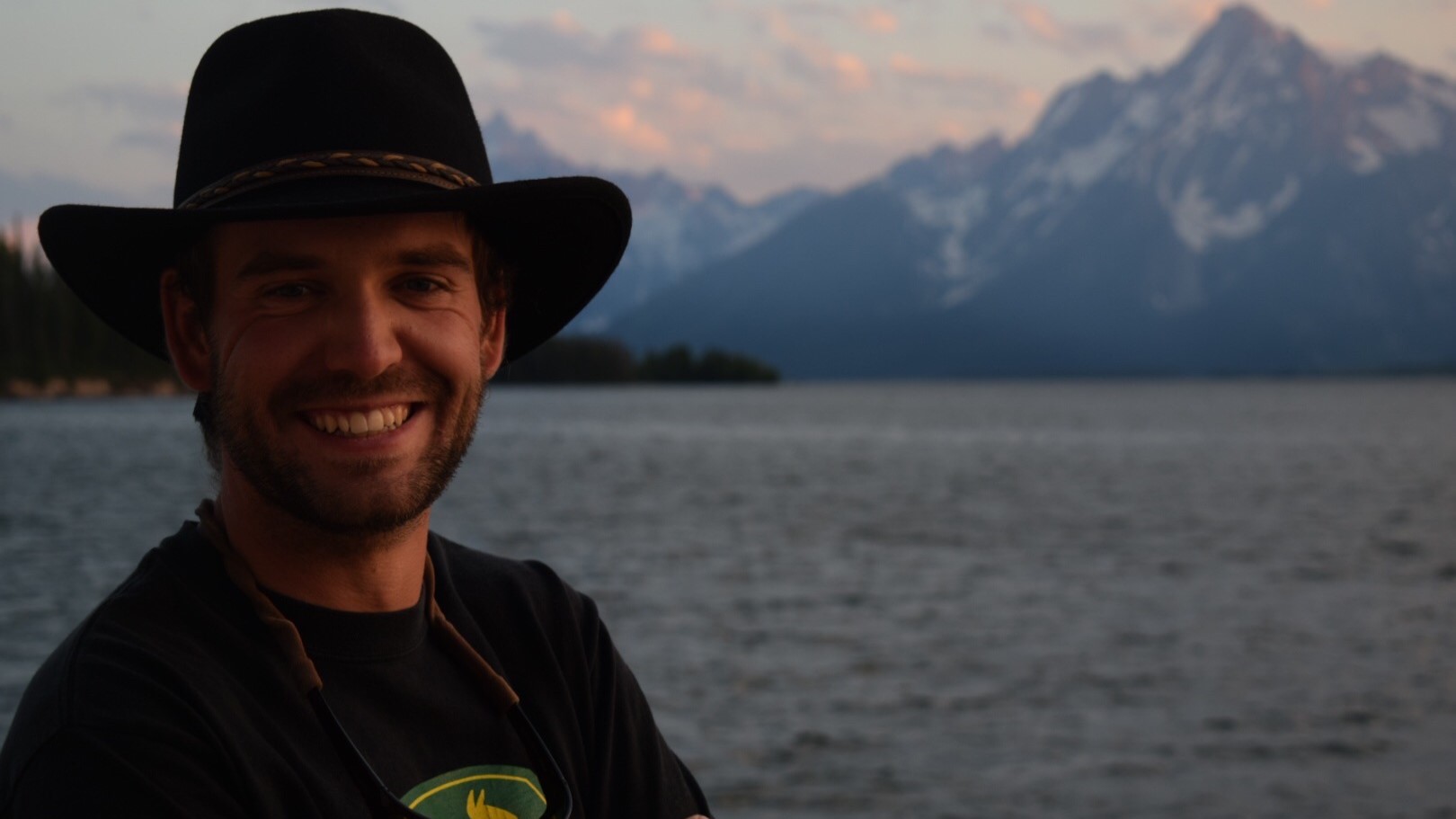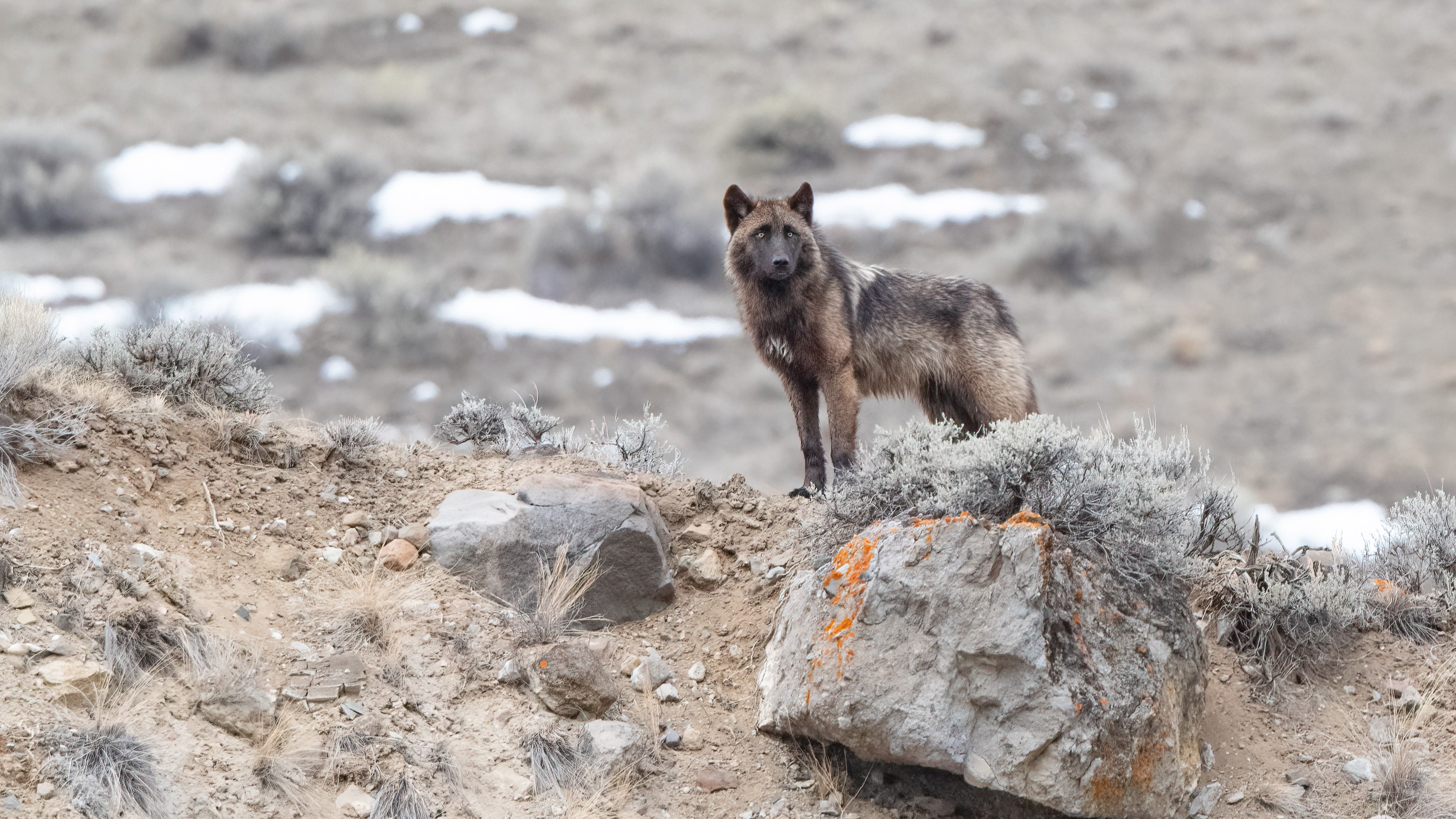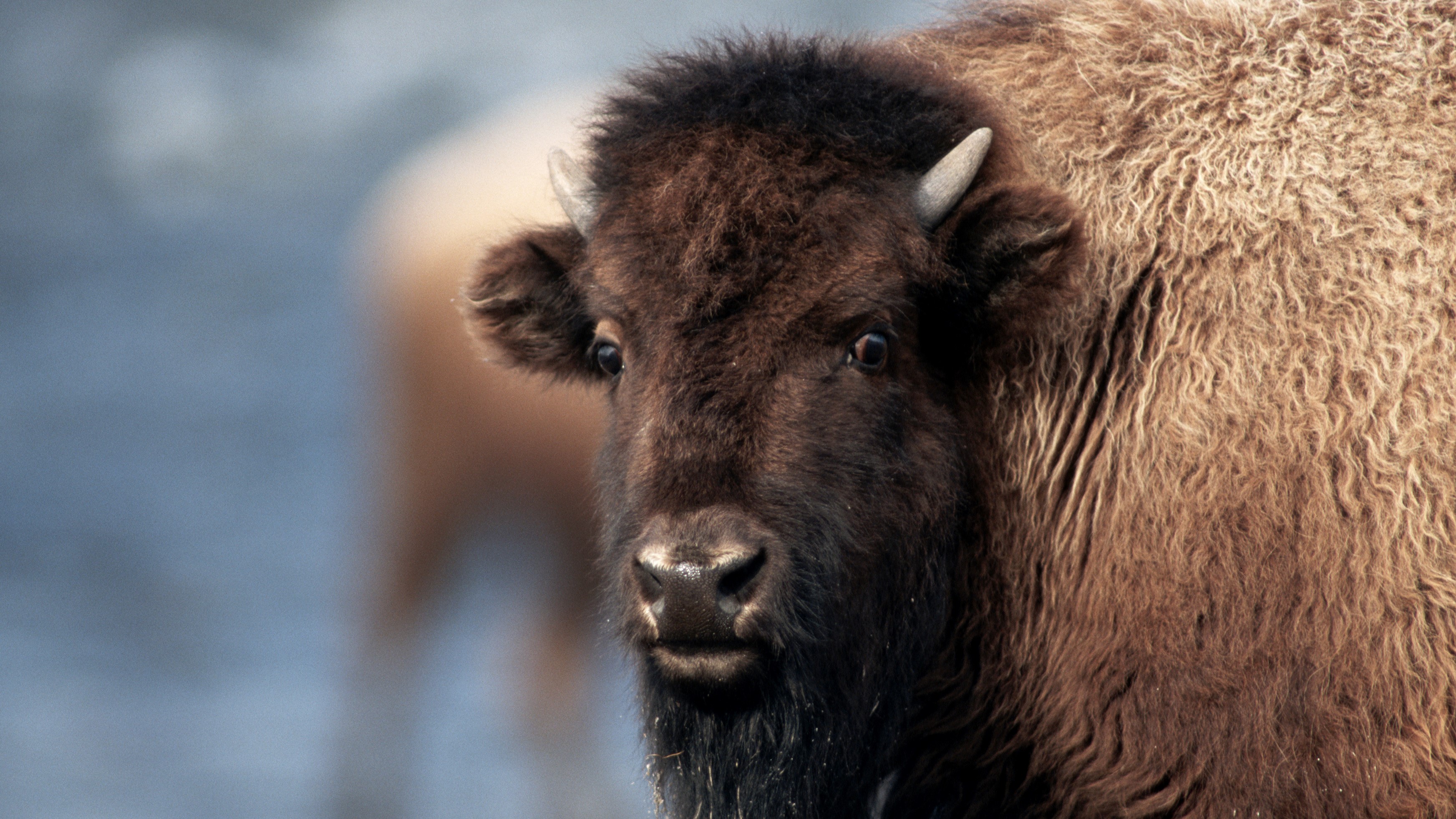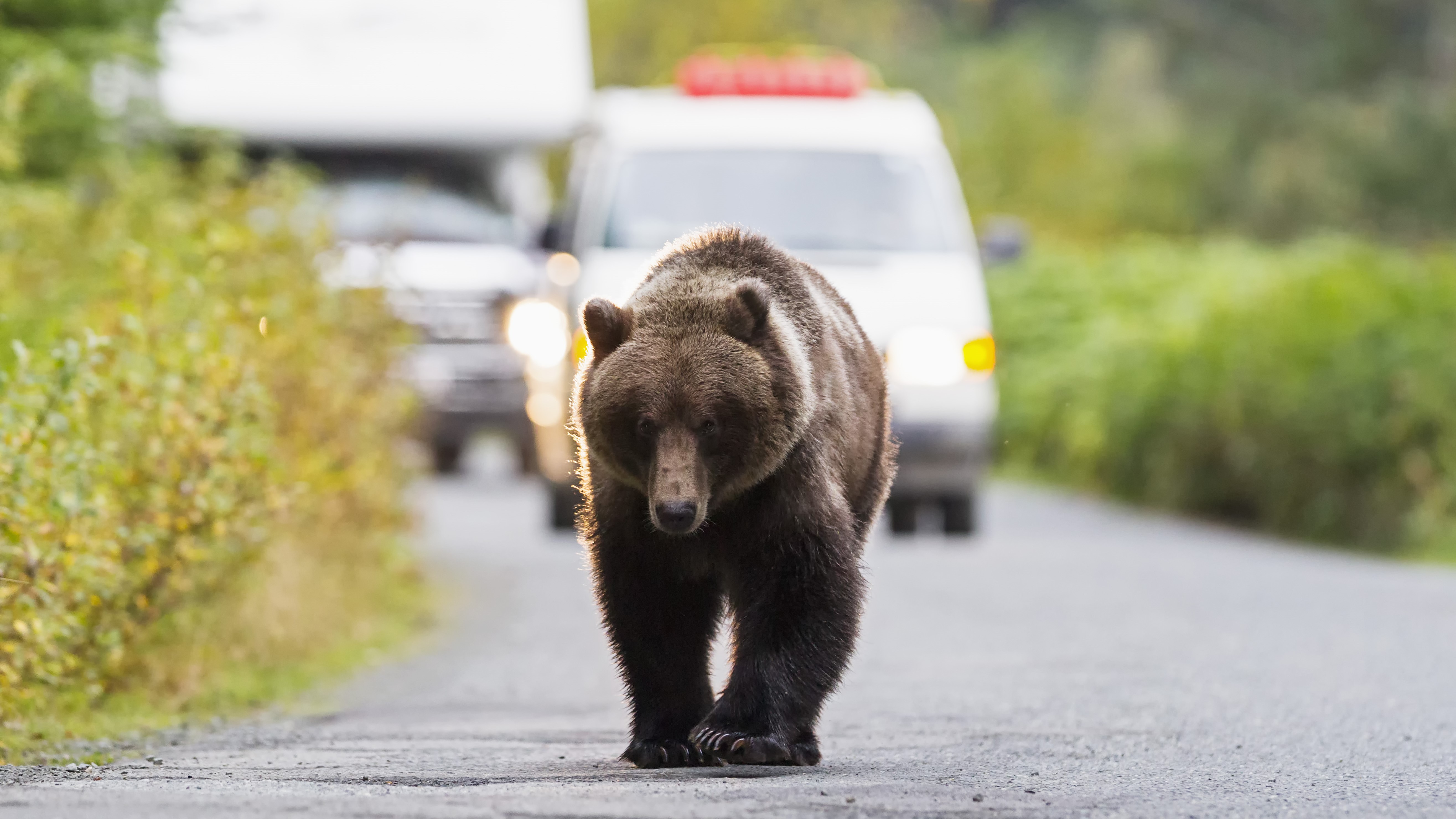
Lots of Americans grow up taking family ski vacations in Colorado. Then they move to the Centennial State as soon as they can, inspired by the romance of their early mountain adventures. Colorado native Bo Welden went against the flow when he left his home state for Jackson Hole to teach environmental education after researching conservation and natural resources in Rwanda and at home.
Welden had grown up visiting friends in Western Wyoming and fell in love with Yellowstone and Grand Teton National Parks. Today, as a wildlife naturalist guide with Jackson Hole Eco Tour Adventures, he gets to show others around these world-famous landmarks in search of wildlife viewing opportunities.
“As a guide I take people to really scenic places, and let them take a picture, and I have some of those similar photos of me as a kid.”
“We’re pretty spoiled to be able to go from town to northern Grand Teton and hang out with grizzly bears for a couple of hours, and then drive just an hour or so south, and be back in town," he says of the area he's called home since 2017.
Needless to say, Welden's work includes some major perks, spending time in some of the world’s most breathtaking landscapes and getting up close and personal with some fantastic creatures among them. His access to Yellowstone wildlife has led him to share some extraordinary footage on his Instagram account, Bo Knows Outside, and it was his recent video of a wolf regretting its decision to chase elk that introduced me to his page.
Welden recently agreed to chat to me about his experiences as a wildlife guide at Yellowstone and share what he’s learned so far so if you’ve got your hiking boots, trekking poles and best binoculars packed and are heading west for a wildlife tour this summer, you’ll want to keep reading.

1. It’s not all Hakuna Matata
If you grew up in the same era as me, you might have thought that a time machine would come in the form of a DeLorean, but according to Welden, standing in Yellowstone’s wildlife mecca, the Lamar Valley, is just like stepping back in time.
“This area is arguably the last intact ecosystem in the lower 48 states of the US,” says Welden.
And that means that what you get to see can be, well, primal. Sticker warning: your trip to Yellowstone probably won’t involve dancing, singing warthogs, but it could entail a wolf pack taking down a bison calf for supper. Watching wildlife can be awe-inspiring, memorable and hugely exciting, but it can also be extremely brutal.
“I've watched things sometimes that folks don't love to watch, and it's hard,” muses Welden.
“You know, watching wolves or bears take down prey, which is quite exhilarating and powerful to see but at the end of the day there is also an animal losing its life.”
Though it can be sad, Welden says, the beauty lies in the fact that there are still places in the world where that can happen.

2. Bison are not just fluffy cows
Some of the most stunning shots of Yellowstone, besides it’s glorious geysers, are of herds of bison grazing in the park. In fact, Yellowstone’s bison herd which can grow to as many as 6,000 bison, is so massive that some visitors get bored of them
“A lot of people are like, I don't want to see any more bison. Okay, we won’t show you any more of those,” he laughs.
But in seriousness, the sheer number of bison in the park perhaps in addition to their friendly appearance is what leads to so many careless tourists getting too close, posing for selfies and occasionally getting gored in the park.
“Bison are kind of funny because people get these false positive feedback loops where they say, ‘hey? You know what Bo? I got close to that one, that one and that one. So I'm gonna get close to one more.’ And the first three, you kind of got away with it. And then, because bison just look like strange, fluffy cows, it's like that thing can't hurt me. But they can.”
In fact, when they want to, bison can sprint at speeds of over 30 miles per hour, and they weigh between 1,300 and 2,100 pounds. There’s no chance that you won’t see any bison on your trip to Yellowstone, but you’re going to want to stay at least 25 yards away from them, and it’s your responsibility to move away if they move towards you.
“You would never want to get close to that,” warns Welden.
3. There’s more to Yellowstone than bears, bison and wolves
The most common question Welden gets asked?
“Are we gonna see a grizzly today?”
Answer: maybe, and yes, your guide has bear spray. And you’re definitely going to see a lot of bison, and perhaps even wolves. But there’s a lot more to Yellowstone than the big three, according to Welden. In addition to the park’s 67 different mammals, he says that Yellowstone’s incredible avian population (nearly 300 species of birds have been documented there to date including raptors, songbirds, shorebirds, and waterfowl) are worth dipping into some bird watching.
“I like getting folks interested in different waterfowl or the really complex behaviors of songbirds that cheat on their partners while they're building nests, there's all these really amazing dynamics that happen. But they're just not like the big and sexy charismatic species,” he says, which is why they get overlooked.
They’re also smaller and more difficult to spot, so bring your binoculars and be patient.
When he’s not looking to the skies, Welden is drawn to smaller mammals like badgers and weasels, which he captures on his Instagram page, as well as the pronghorn antelope.
“They look like they belong in Africa but they’re the fastest land animal in North America. They have this cool social structure. So I do try to get folks to dive in a little more on those versus being just so worried about about seeing a bear or a wolf.”

4. Your momentary visit can have a lasting impact
As a guide, Welden says he spends a lot of time with folks who don't realize that getting too close or leaving trash lying around can have an impact, because they’re usually only here once. Sometimes, your behavior has a big impact – a bear gets habituated to humans, becomes aggressive and is euthanized. Often, however, it’s more like “ death by a thousand cuts,” and it can be hard to realize the impact of your visit when you’re only there for a day.
“The biggest misconception is maybe thinking that your momentary visit won't have a long, lasting impact,” says Welden, recalling an event that took place only the previous night where he went out at sunset only to find visitors walking in an enclosure for birds, with their dogs off leash, hunting for antlers – all of which is illegal in a National Park.
It’s hard to go a day without reading a news story about a tourist doing something foolish in Yellowstone, whether it’s walking off the boardwalk onto fragile ecosystems for a better photo or approaching bear cubs for a closer look.
“That very well could be the end of the animal's life. The wildness of this place at some level is constantly under threat by our presence.”
As for advice to help keep the wilderness wild, Welden’s is the same as visiting any outdoor space – leave no trace, secure your food and keep your distance.

5. Find the intimate moments
Welden is the first to admit that if he’s driving through the park with guests and comes upon a bear jam, he’s going to feel compelled to pull over and allow visitors time to watch that grizzly, wolf or bison that’s drawing crowds. But as a guide, he considers it his duty to try to steer people away from the crowds.
“If I were on my own time I would probably not stop and I try really hard as a guide to find more intimate moments for guests where it's just you and that animal in the landscape.”
And while it truly is rewarding to take that perfect shot and post it on Instagram for all to see, when you’ve done that he recommends bringing a scope like a pair of binoculars and spending some time zooming in on wildlife without worrying about documenting the experience for later.
“Stick your own eye through the spotting scope. Take this larger mental picture of where you're standing right now. If I can get folks that experience it feels worth it.”
When you can have a moment with wildlife that’s not at a zoo, Welden says, there's an important glimpse of what our world used to be like in its entirety that benefits us, even when you get back home to Cinncinati and you’re shopping at Target remembering the wolf you saw in Yellowstone.
“I think there's a certain level of importance for people to see these wild places. It just feels good to know that there's a place where wolves just get to do their thing, and they just get to be wild animals. I think there's something good for our psyche that there are still places that that we can only be visitors to.”







